Learner Journey
Explore how teachers can craft effective learning journey maps to enhance classroom engagement and understanding.


Explore how teachers can craft effective learning journey maps to enhance classroom engagement and understanding.
The Thinking Framework is a structured approach designed to enhance the learning process by integrating metacognition into every stage of the educational journey. At its core, it serves as an instructional design toolkit that enables teachers to develop more effective learning experiences tailored to the needs of individual learners.
This framework helps educators clearly define learning goals, craft relevant learning materials, and orchestrate activities that promote active learning. By fostering a learning environment that prioritizes understanding and the application of knowledge, the Thinking Framework ensures that students not only acquire information but also develop an in-depth, intuitive understanding of the material.
Essential to this framework is its emphasis on metacognitive awareness, which encourages students to think about their own thinking. This awareness is crucial for both educators and students as it leads to more effective knowledge acquisition strategies and a more personalized learning experience.
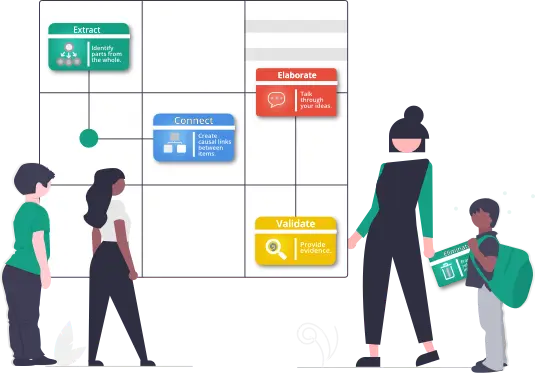
Schools adopting the Thinking Framework are equipped with a variety of instructional strategies that support basic activities as well as complex knowledge application. This approach not only enhances the academic performance but also prepares students to manage their learning independently, making it a pivotal component of modern educational practices.
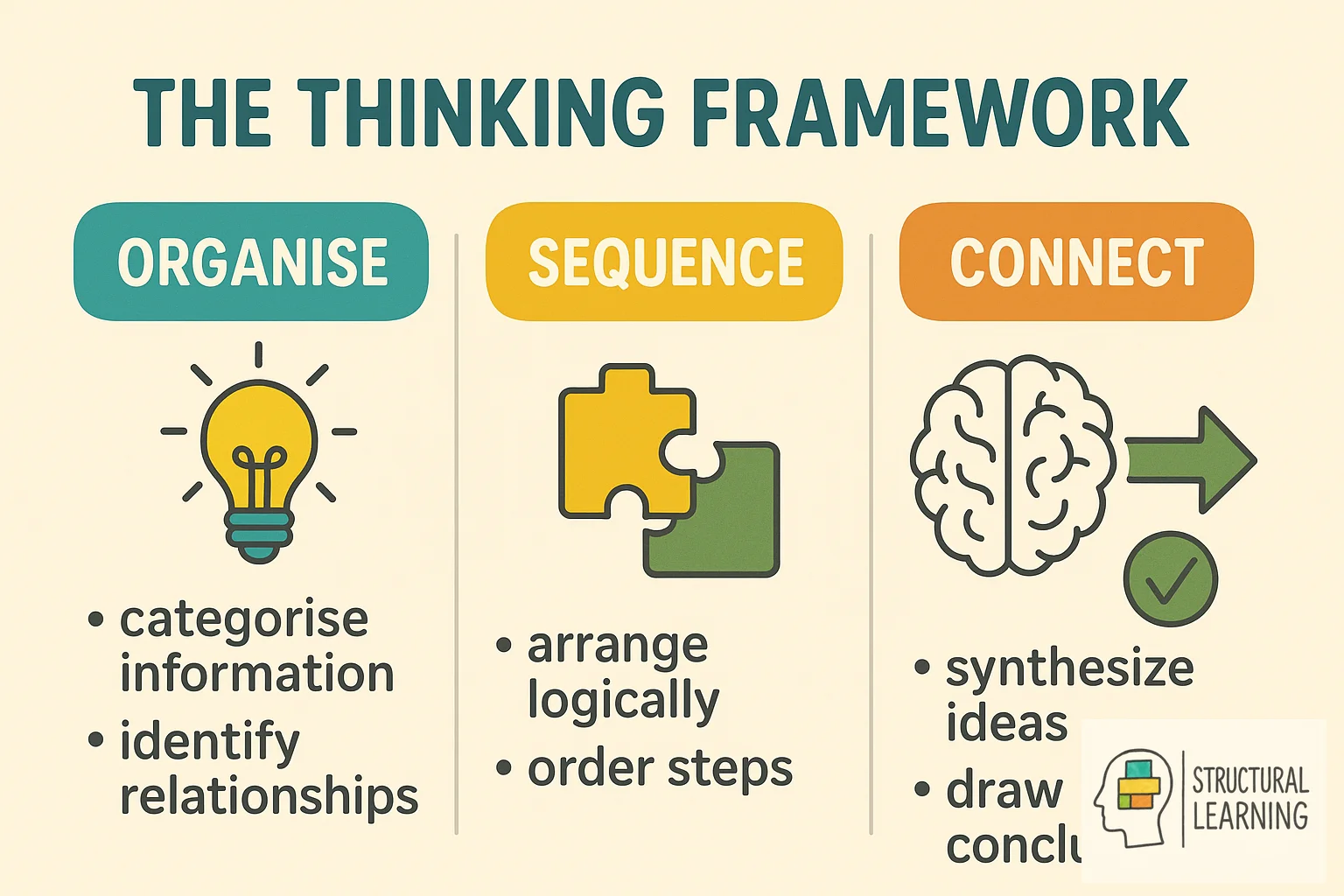
In essence, the Thinking Framework shifts the focus from traditional, passive reception of information to a more dynamic, interactive process. It challenges both teachers and students to engage deeply with the content, thereby transforming the typical learning experience into an active exploration of knowledge. This transformation is vital for schools that aim to cultivate not just learners, but thinkers who are capable of navigating the increasingly complex demands of contemporary life and work.
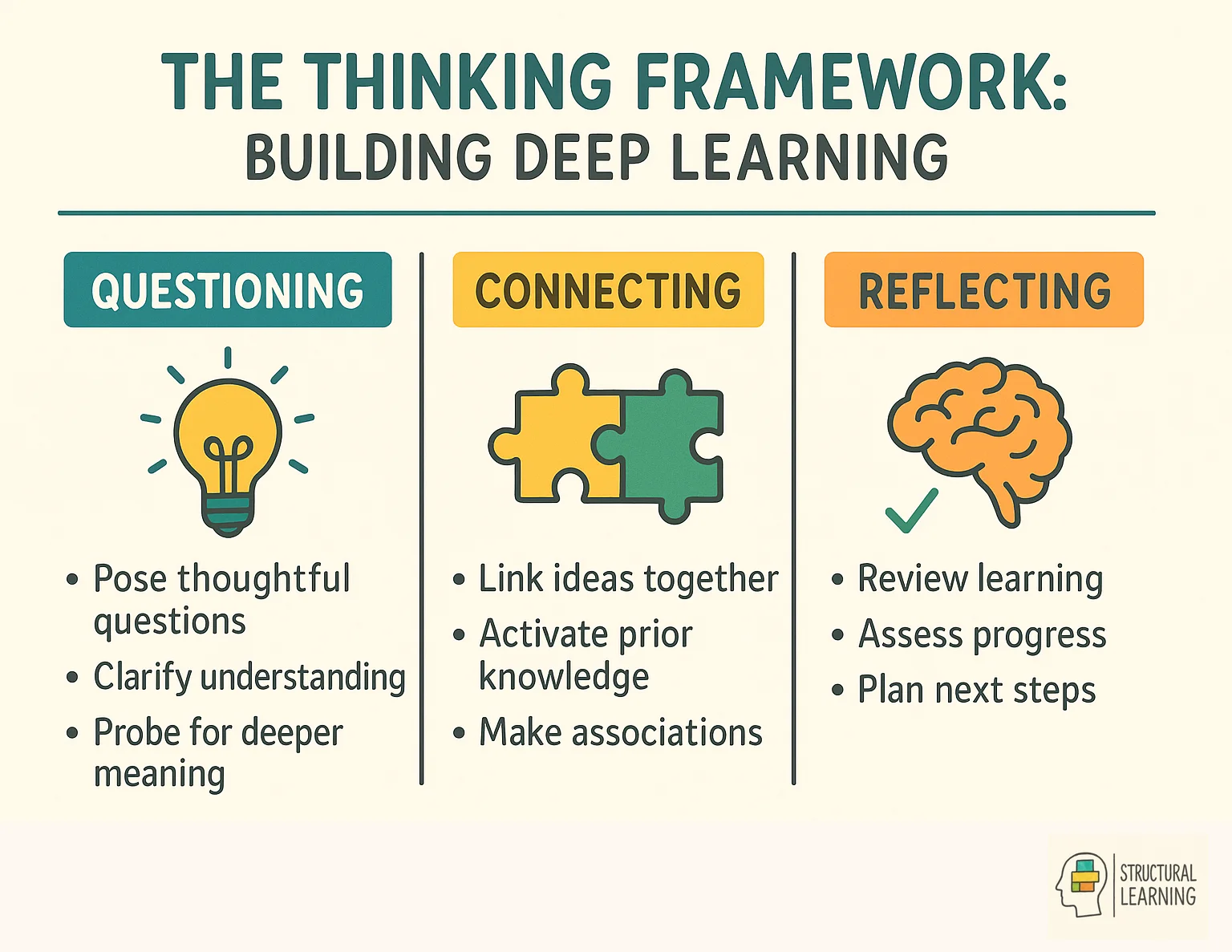
Understanding and activating deep, meaningful thinking in children is crucial for their development and success in the classroom. This activation not only enriches the learning opportunity but also enhances the overall quality of their educational experience. By engaging in profound cognitive processes, students can navigate complex concepts more effectively and embark on successful learning journeys that are rich in discovery and insight.
By focusing on these reasons, educators can create a learning environment that values and cultivates deep thinking, preparing students not just for academic success but for lifelong intellectual engagement.

The Thinking Framework serves as a robust tool for measuring learner outcomes, providing educators with essential insights into student understanding and engagement. This framework incorporates formative assessment techniques that are integral to the educational process, offering a dynamic method to evaluate and enhance learning as it happens.
By utilizing "I can" statements associated with each learning action, teachers can clearly articulate expectations and objectives. These statements act as milestones within the learner journey mapping, guiding both instruction and assessment. This method not only tracks progress but also identifies areas of incomplete understanding, allowing for timely interventions that cater specifically to the needs of early-stage learners and more advanced students alike.
The chaining together of these learning actions within the framework is not just procedural but an art form that enhances deep cognitive engagement. This structured yet flexible arrangement of actions ensures that instructional strategies are not only aligned with educational goals but are also sufficiently adaptable to meet diverse learner needs and styles.
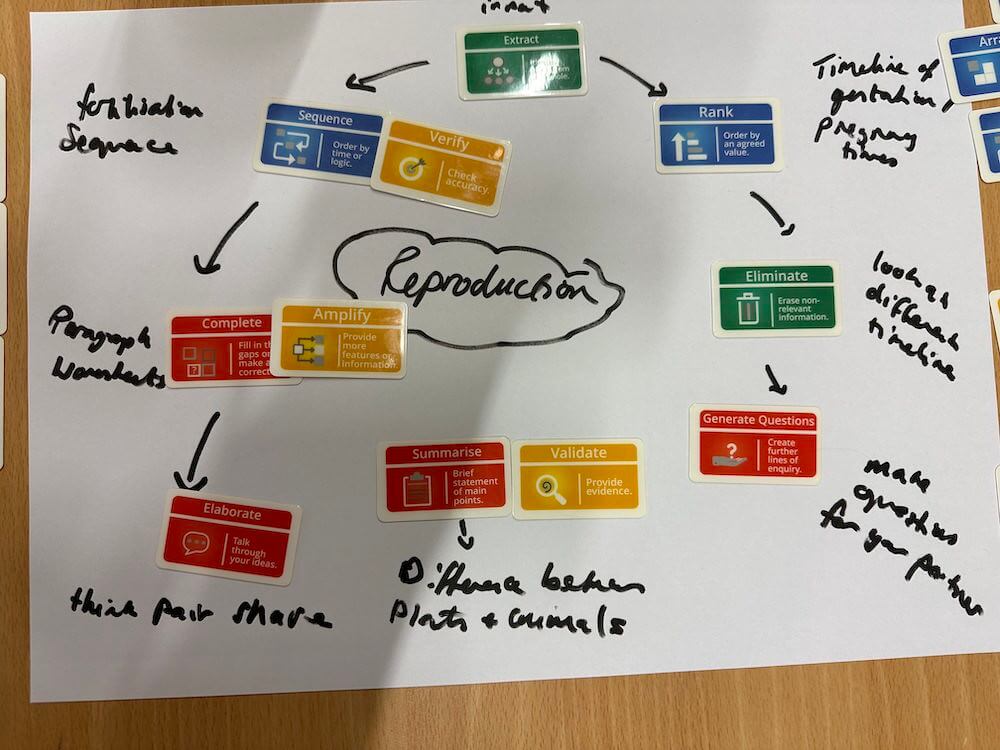
Moreover, these learning actions serve as checkpoints throughout the educational journey. They function as 'health checks' that provide continuous feedback on learner experiences and involved activities. This ongoing assessment helps educators adjust their teaching strategies in real-time, ensuring that each student's learning path is optimized for success.
In practice, the Thinking Framework's approach to formative assessment exemplifies an effective model for educational measurement. It underscores the importance of alignment strategies that ensure the curriculum is delivered in a way that all students can access and benefit from. Consequently, this framework not only measures educational outcomes but also enhances the overall quality of learner engagement, making it an indispensable tool for creating effective learners in today’s classrooms.
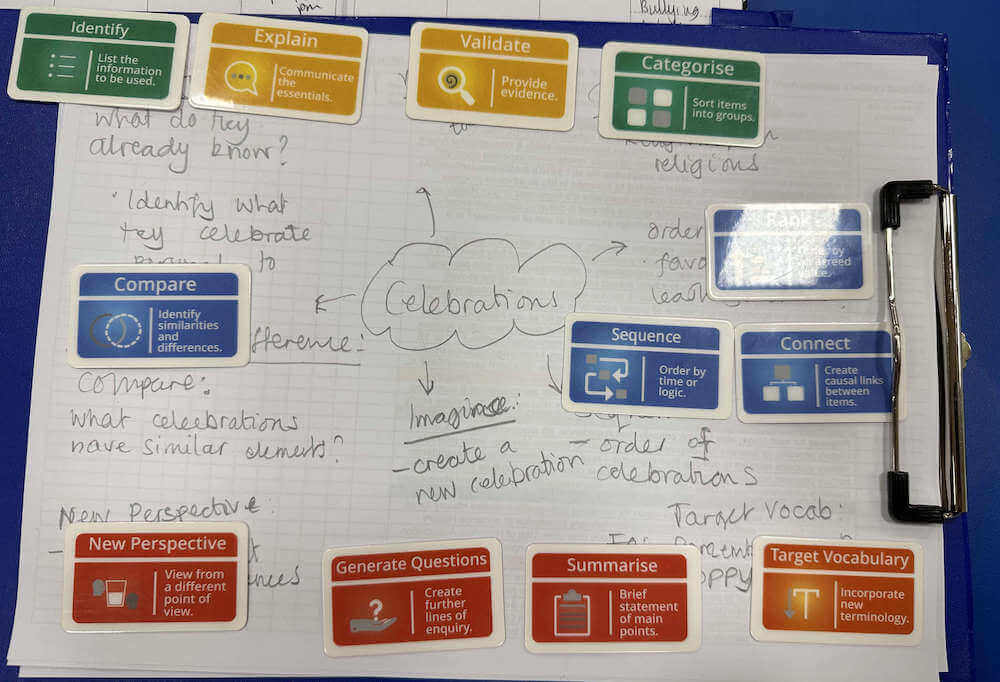
These practical ideas aim to empower teachers to use the Thinking Framework effectively, ensuring that each learning journey is thoughtfully structured to enhance learner engagement and success.
The Thinking Framework and accompanying tools like Writer's Block and graphic organizers offer versatile strategies for supporting children with diverse educational needs, including those who may be reluctant to participate in traditional verbal activities. Here are six practical ways these tools can be used to make learning more inclusive:
By incorporating these practical strategies into the classroom, teachers can ensure that all students, regardless of their initial comfort with traditional learning modalities, have the opportunity to engage meaningfully and effectively in their education. This inclusive approach not only enhances academic outcomes but also builds confidence and encourages lifelong learning.

The Thinking Framework is a structured approach designed to enhance the learning process by integrating metacognition into every stage of the educational journey. At its core, it serves as an instructional design toolkit that enables teachers to develop more effective learning experiences tailored to the needs of individual learners.
This framework helps educators clearly define learning goals, craft relevant learning materials, and orchestrate activities that promote active learning. By fostering a learning environment that prioritizes understanding and the application of knowledge, the Thinking Framework ensures that students not only acquire information but also develop an in-depth, intuitive understanding of the material.
Essential to this framework is its emphasis on metacognitive awareness, which encourages students to think about their own thinking. This awareness is crucial for both educators and students as it leads to more effective knowledge acquisition strategies and a more personalized learning experience.

Schools adopting the Thinking Framework are equipped with a variety of instructional strategies that support basic activities as well as complex knowledge application. This approach not only enhances the academic performance but also prepares students to manage their learning independently, making it a pivotal component of modern educational practices.

In essence, the Thinking Framework shifts the focus from traditional, passive reception of information to a more dynamic, interactive process. It challenges both teachers and students to engage deeply with the content, thereby transforming the typical learning experience into an active exploration of knowledge. This transformation is vital for schools that aim to cultivate not just learners, but thinkers who are capable of navigating the increasingly complex demands of contemporary life and work.

Understanding and activating deep, meaningful thinking in children is crucial for their development and success in the classroom. This activation not only enriches the learning opportunity but also enhances the overall quality of their educational experience. By engaging in profound cognitive processes, students can navigate complex concepts more effectively and embark on successful learning journeys that are rich in discovery and insight.
By focusing on these reasons, educators can create a learning environment that values and cultivates deep thinking, preparing students not just for academic success but for lifelong intellectual engagement.

The Thinking Framework serves as a robust tool for measuring learner outcomes, providing educators with essential insights into student understanding and engagement. This framework incorporates formative assessment techniques that are integral to the educational process, offering a dynamic method to evaluate and enhance learning as it happens.
By utilizing "I can" statements associated with each learning action, teachers can clearly articulate expectations and objectives. These statements act as milestones within the learner journey mapping, guiding both instruction and assessment. This method not only tracks progress but also identifies areas of incomplete understanding, allowing for timely interventions that cater specifically to the needs of early-stage learners and more advanced students alike.
The chaining together of these learning actions within the framework is not just procedural but an art form that enhances deep cognitive engagement. This structured yet flexible arrangement of actions ensures that instructional strategies are not only aligned with educational goals but are also sufficiently adaptable to meet diverse learner needs and styles.

Moreover, these learning actions serve as checkpoints throughout the educational journey. They function as 'health checks' that provide continuous feedback on learner experiences and involved activities. This ongoing assessment helps educators adjust their teaching strategies in real-time, ensuring that each student's learning path is optimized for success.
In practice, the Thinking Framework's approach to formative assessment exemplifies an effective model for educational measurement. It underscores the importance of alignment strategies that ensure the curriculum is delivered in a way that all students can access and benefit from. Consequently, this framework not only measures educational outcomes but also enhances the overall quality of learner engagement, making it an indispensable tool for creating effective learners in today’s classrooms.

These practical ideas aim to empower teachers to use the Thinking Framework effectively, ensuring that each learning journey is thoughtfully structured to enhance learner engagement and success.
The Thinking Framework and accompanying tools like Writer's Block and graphic organizers offer versatile strategies for supporting children with diverse educational needs, including those who may be reluctant to participate in traditional verbal activities. Here are six practical ways these tools can be used to make learning more inclusive:
By incorporating these practical strategies into the classroom, teachers can ensure that all students, regardless of their initial comfort with traditional learning modalities, have the opportunity to engage meaningfully and effectively in their education. This inclusive approach not only enhances academic outcomes but also builds confidence and encourages lifelong learning.
